From the likes of My Fair Lady all the way to Million Dollar Baby and dozens in between, mentoring movies are a well-worn and essential subgenre of drama. Like a cycle of the human condition, we will always have wayward younger generations needing the wisdom of their elders. Those relationships are vital and poignant, and the films that present those pairings should always be welcomed, like many of the subjects in them, with open arms. Get your hugs ready for Tiger Within from Menemsha Films.
I know what you’re thinking, though. Reality and movies don’t often match. So many mentoring movies swing hard for sugar-coated happy endings through miraculous feats of healing. The films leaping that high seem unrealistic or, worse, disingenuous. We know real-life circumstances aren’t fixed in two magical hours. Written and directed by, on paper, unlikely sources, Tiger Within knows a great deal of that actuality and portrays those difficulties in earnest ways.
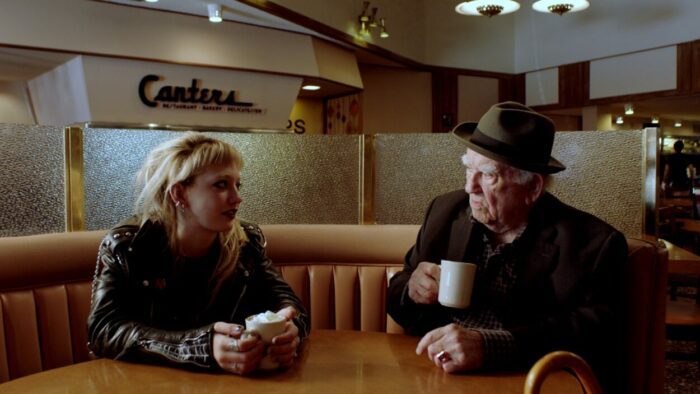
Played by newcomer Margot Josefsohn, Casey is a derelict and combative Ohio teen who favors glam punk stylings that cause her to gravitate unknowingly into a crowd with neo-Nazi tendencies and Swastika paraphernalia. Casey’s alcoholic mother Marge (TV actress Erica Piccininni) is over-matched and cannot handle her anymore. At the urging of her abusive boyfriend (Taylor Nichols of PEN15), Marge agrees to send Casey to Los Angeles to live with birth father (The Stanford Prison Experiment’s James C. Victor). When Casey sees her father and his lily-white family of spoiled privilege at the train station, she hides and avoids going home with them.
Jettisoned to live in an unsafe city on her own, Casey finds herself homeless and a robbery victim before a doddering old man moving with a cane named Samuel, played by the late Edward Asner, finds her sleeping in a Jewish cemetery. Believing her presence in a holy place as a sliver of fate, he rouses the girl up and offers her a meal and a warm place to sleep. Casey, at first, couldn’t be more profane or ambivalent in receiving and taking advantage of Samuel’s kindness.
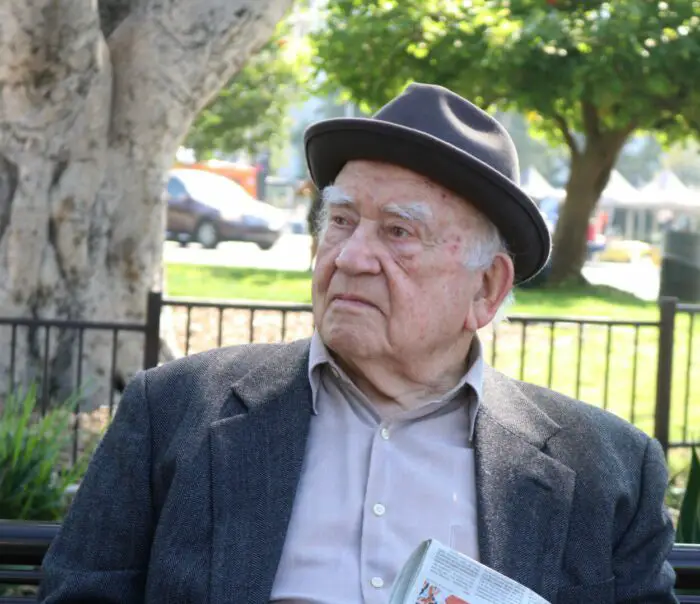
All her tough talk doesn’t phase the 90-something widower and Holocaust survivor. Samuel has a sagacious counter for her every stance and outburst. Throughout the next few months as Casey descends into sex work as a masseuse, their paths intersect again and again to the point where Samuel offers his home permanently to Casey. Sharing conversation and confrontation space, Tiger Within opens the wounds of these two very different souls.
Formed without every Millennial stereotype from the screenwriting buffet, Casey is presented with untamed hate fueled by unaddressed sadness and massive interpersonal and intrapersonal fears. Artistic interludes between scenes by Clara Collins and Vally Mestroni bring viewers stark visual expressions of her isolated headspace and harmful thoughts through the character’s art. Most of Casey’s outbursts are anti-social and spiteful until they punch harder after exhaustion with divulged truths like how no one sticks up for her or how she thinks everything she does—and her very existence—is a mistake. That’s where Samuel comes in with words and actions to guide her in addressing and controlling her fears.
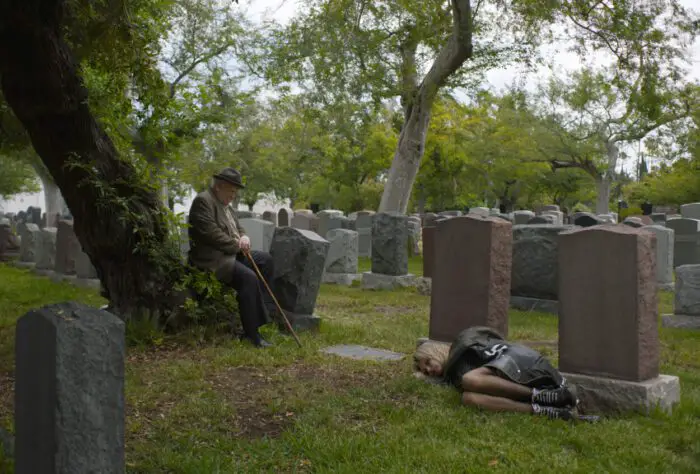
Parallel to Casey, we learn Samuel lost his children when they were young, meaning this troubled young woman is a redemptive chance for Samuel to become a parent and guardian. Quite poetically, Asner delivers a line to this point against Josefsohn’s brusque exterior that states, “You’re the pleasure in my life right now.” Not long after, exuding all the certainty he can muster, he disarms again with, “The world will see your beauty too.” The heart-filled spirit of those moments and others could erode granite and answer any doubt why a prudent character like this man would take someone like Casey into their home and under their wing.
While the film is dialogue-heavy, it’s not trying to draw a crowd or reach for applause with its monologues. There are no grand flashbacks scenes showing a younger Samuel, his departed wife, and the violent history of The Holocaust. His powerful words suffice. We see the present situation of Casey and a few of the last straws that sent her on her own, but much of the damage that made her who we see has happened long before the cameras started rolling. True to life, tragedy is, more often than not, a private experience.
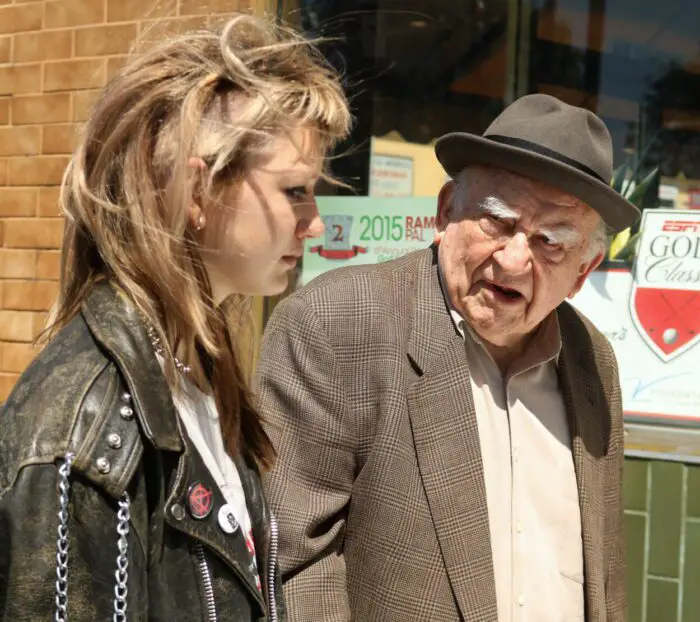
Tiger Within gets that struggle and continues it forward as a story made with almost complete on-screen privacy. Societal judgments from an array of sources– like Casey’s father’s new family, the late boyfriend inclusion (played by up-and-comer Diego Josef), and the seedy massage client strangers before him– all land behind closed doors. There’s no crowd of gaping public bystanders or a school hallway of finger-pointers equal to tropes from other movies about exposed rebels or mislabeled freaks made worse by their environment.
The very same care is given to the moments of improvement, change, and uplift in Tiger Within. Nothing is begging for validating attention from others. That counts as rare in today’s “be seen” era of social media influence, where the majority of teens overshare and over-document every peak and valley of their lives, subjecting themselves to rampant outside gossip that wrongly sways their self-esteem. The acting of our leads follows suit to that insulation.
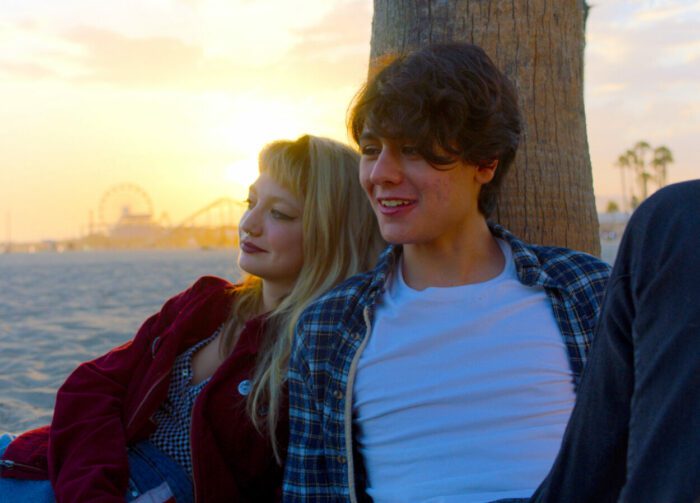
Tiger Within will be the first time you see Margot Josefsohn. She leaves quite an impression. Not unlike Sadie Sink in The Whale, any teen actor can dial the angst amplifier to 11. The next level is expressing the real fragility behind the hardened shell and showing the potential for lift. Josefsohn reaches those heights where others do not. In contrast, this may be the last time you see 7-time Emmy winner Ed Asner in a movie, and does he ever acquit himself finely. The charm, chivalry, and benevolence coming from his screen presence and stature as a performer are generous flourishes a story like this deserves. He’s perfect for Tiger Within.
Circling back to the film being aware of the actuality of its scenario of misfortune necessitating kindness, quite possibly its strongest principle is that healing or correction from trauma is never immediate. This isn’t a movie presenting one day of nice gestures from a well-meaning old man to an off-course kid where all is better. Tiger Within spans several months where even Samuel’s greatest efforts are not a mystical salve for Casey’s personal fractures. Unlike some of the popular mentoring movies, Tiger Within promises no complete transformation because it knows full well no such automatic correction exists. What it can promise is its own best foot forward, and that’s happily plenty.
All of this is some bona fide storytelling clout coming from the writer of two Princess Diaries movies from the 00s and the director of two Screwballs movies from the 80s. Writer Gina Wendkos digs from another place for her first filmed screenplay in fifteen years. Likewise, director Rafal Zielinski, with his first feature in nine years, shows a veteran hand’s economical simplicity to capture the genuineness of the people and places. Who knew either of them had this restraint and temperance in them? Removing mountains of fluff, it is highly appreciable to see the heavy emotions matched by bottomless empathy forged here in Tiger Within. Keep mentoring movies like this one coming.




